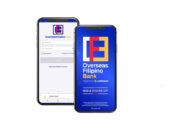
Only Two of Six Philippine Digital Banks Are Profitable, Says BSP
by Fintech News Philippines March 11, 2024Recent insights from the Bangko Sentral ng Pilipinas (BSP) have cast light on the challenging environment facing the Philippines’ digital banking sector. According to Melchor Plabasan, Director at the BSP, among the six digital banks operational within the nation, only two have navigated their way to becoming profitable so far.

Melchor Plabasan
“There are two among the six banks that are profitable, but the expectation is that it would take about five to seven years before a digital bank becomes profitable,”
Director Plabasan said at a press conference.
This situation mirrors a global trend where merely 5% of digital banks are managing to sustain profitable operations. The journey towards achieving financial success in this domain is anticipated to be a lengthy one, with projections suggesting a timeframe of five to seven years to reach profitability.
A significant hurdle faced by these institutions is the higher incidence of non-performing loans within their portfolios. BSP data indicates that in 2023, 14.49% of the total credit portfolio of digital banks was classified as non-performing, a figure notably higher than the 3.24% bad loan ratio observed across the broader Philippine banking sector.
This challenge has necessitated the allocation of a considerable portion of their capital towards provisions for losses, thereby constraining their ability to extend new credit and contributing to increased operational expenses.

Eli M. Remolona, Jr
Despite these obstacles, the sector has demonstrated an ability to attract deposits online. Nevertheless, the BSP’s Governor, Eli Remolona Jr., has articulated concerns regarding the overall performance of digital banks, signaling a cautious approach towards permitting the entry of new players into the market.
“I think many are interested, quite a few are interested, and they can’t wait for us to open it up. We’re looking at what’s going on and we’re trying to understand the new business models that they bring,”
said Governor Remolona.
In response to the evolving dynamics of this sector, the BSP instituted a three-year moratorium on new digital banking licenses in 2021 and extended to end-2024, aimed at allowing the regulator sufficient time to assess the performance and impact of these entities on the financial system at large.
Greg Krasnov, the founder of Tonik digital bank, responded regarding the profitability of the two incumbent-led digital entities, claiming that large loan portolio transfers from their parent banks is how they could show profit at such a rapid rate. Greg added that digital pure-play Tonik has figured out its path to “lending unit profitability, so now rapidly scaling so that we can bring forward actual P&L [profit and loss] profitability.”
Although the BSP did not name the two profitable digital banks, Overseas Filipino Bank (OFBank) is a unit of state lender LandBank of the Philippines, and UnionBank’s UnionDigital Bank was the first to declare it was operating in the black.
Looking ahead, the BSP plans to issue an industry report, expected to include recommendations concerning the regulatory framework for digital banking. This report is anticipated to guide decisions on whether the moratorium will be lifted, partially lifted, or extended, and is awaited with interest for its implications on the future trajectory of digital banking in the Philippines.
Despite the prevailing challenges, the sector has made strides in attracting customers, with the six digital banks collectively opening approximately 8.7 million deposit accounts, representing around 7% of all bank deposit accounts in the Philippines. This indicates a burgeoning interest in digital banking services among the population.
Featured image credit: Edited from Freepik








